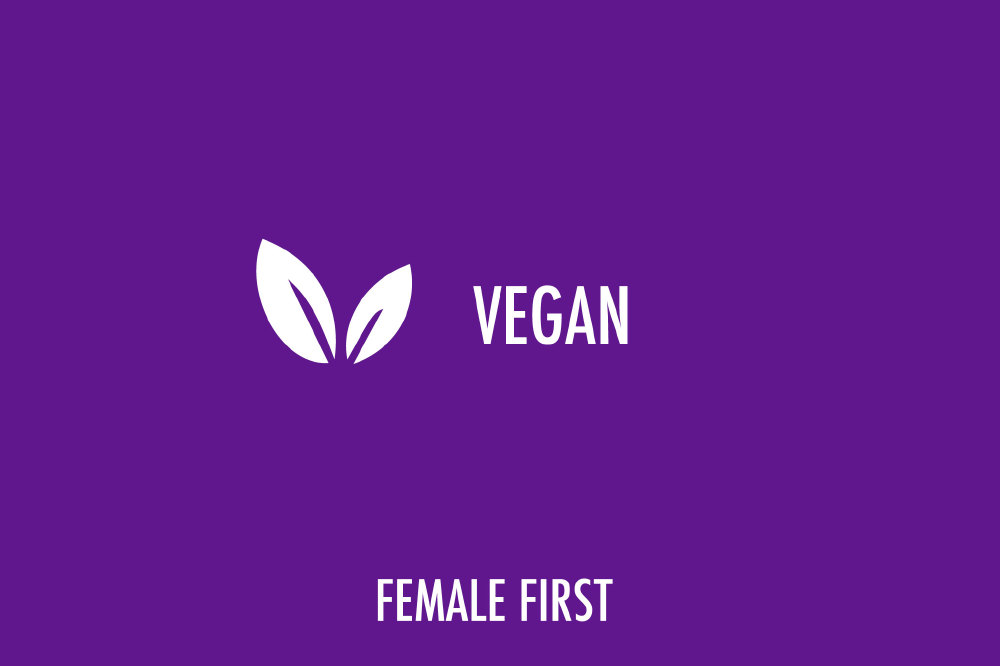Written by Isabel Butler (MSc, ANutr) Nutritionist at Spoon Guru

Vegan on Female First
As a nation we are more and more health conscious over what we are eating. The health benefits of trending foods such as the avocado are now common knowledge, however these ten other foods are also a great source of nutrients. Some of these may surprise you!
Breakfast is the first meal of the day and can be a great opportunity to pack in nutrients. Some breakfast cereals can be high in sugar, however wholegrain cereals such as bran flakes contain vitamins and minerals as well as fibre, which helps reduce cholesterol.1 Bran flakes in particular contain iron which can be lacking in many female diets and is vital for healthy red blood cells.
While we’re on the topic of breakfast cereals, why not add some toppings such as blueberries. There are not only tasty but nutritious too. Blueberries are full of fibre, antioxidants, and vitamin C.4 They are especially high in gallic acid, a polyphenol that recent studies have shown contribute to keeping us healthy.3
If you're looking for a more nutritious alternative to white bread, why not try Rye bread. Rye bread, like bran flakes, is another source of wholegrains and is high in fibre. Studies have shown that wholegrains can improve heart health and have been linked to reducing cardiovascular disease, type II diabetes, and some types of cancer.1
Tahini is a sesame seed spread. It’s high in omega 6, which is needed for brain function and to help the growth of hair and skin. Tahini also contains copper, an anti-inflammatory needed to help repair injuries, and calcium for healthy bones and teeth. If you have nut allergies, you’ll find tahini is a brilliant alternative to almond butter.
Mushrooms are often considered a staple to add to dishes for flavour, but their nutritional benefits can be overlooked. They are the highest known plant source for vitamin D which is crucial for calcium absorbance and bone growth and maintenance. Portabella mushrooms are not only great stuffed with pepper and nuts as a starter, they are high in B vitamins and selenium to help maintain the immune system and keep us fit and healthy.
Celeriac may not look like the most prettiest vegetable but not only is it seasonal at the moment, it is incredibly versatile. Try using it like potatoes: mashed, boiled, or made into a rosti. Nutritionally they are high in vitamin C for your immune system, potassium to control blood pressure, and phosphorus which is used in bone maintenance.
When making homemade sauces for pasta, using tomato paste can enhance the flavour and make the sauce much more appetising. Compared to fresh tomatoes, tomato paste has higher levels of lycopene, an antioxidant which can help prevent heart disease by improving the health of arteries and blood vessels.5
Red bell peppers are not only a tasty snack to eat by themselves or with hummus, they can be used to spice up a salad or add some crunch to your sandwiches. They are unsung heroes when it comes to vitamin C, with one pepper containing more than an orange. So if you’re looking for your vitamin C fix for the winter, why not try these.
Everyone knows that unless you have an allergy, nuts are good for us. Not only do they help lower “bad” (LDL) cholesterol, they are packed full of protein. Many people probably don't realise that pistachios also contain high levels of antioxidants, which could help protect against heart disease2, and are low in calories too, making them a great snack for anyone, especially those watching their weight.
Finally, if it is a snack you are after why not have some popcorn. Corn is a whole grain and so provides all the benefits for a healthy heart by reducing cholesterol levels in the blood.1 Being high fibre which helps improve digestion, recent government guidelines suggest we should all be eating more fibre in our diets. Naturally gluten free, popcorn is great for gluten allergy sufferers.
You can find a range of vegan recipes on the free Spoon Guru app - available on IOS and Android - https://www.spoon.guru
References
1 = Smith, C. E., & Tucker, K. L. (2011). Health benefits of cereal fibre: a review of clinical trials. Nutrition Research Reviews, 24(1), 118–131.
2 = J Sabaté & Y Ang (2009) Nuts and health outcomes: new epidemiologic evidence. Am J Clin Nutr 89, 1643S–1648S.
3 = Daglia M, Di Lorenzo A, Nabavi SF, Talas ZS, Nabavi SM. (2014) Polyphenols: well beyond the antioxidant capacity: gallic acid and related compounds as neuroprotective agents: you are what you eat! Curr Pharm Biotechnol. 15(4):362-72.
4 = Baby B, Antony P, Vijayan R. (2017) Antioxidant and anticancer properties of berries. Crit Rev Food Sci Nutr. 13:1-17
5 = Cheng HM, Koutsidis G, Lodge JK, Ashor AW, Siervo M, Lara J. (2017) Lycopene and Tomato and risk of cardiovascular diseases: A systematic review and meta-analysis of epidemiological evidence. Crit Rev Food Sci Nutr. 11:0.
Tagged in breakfast Plant Based

